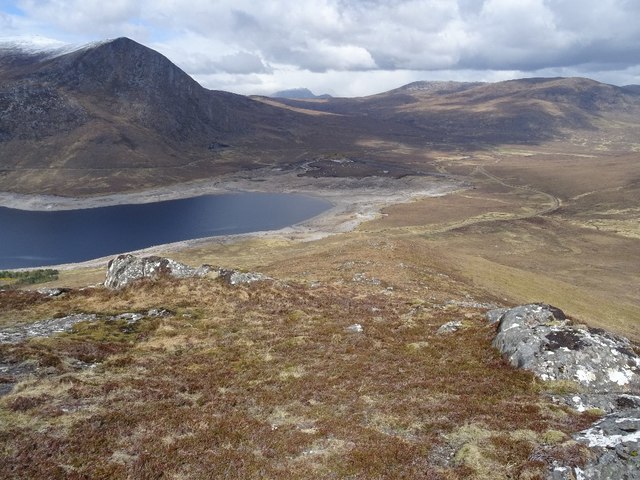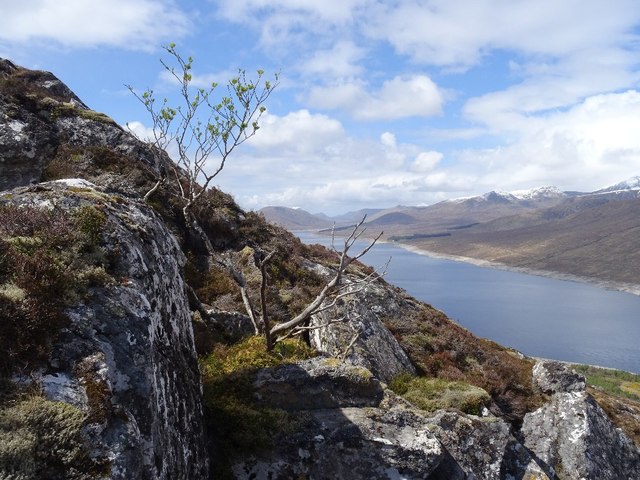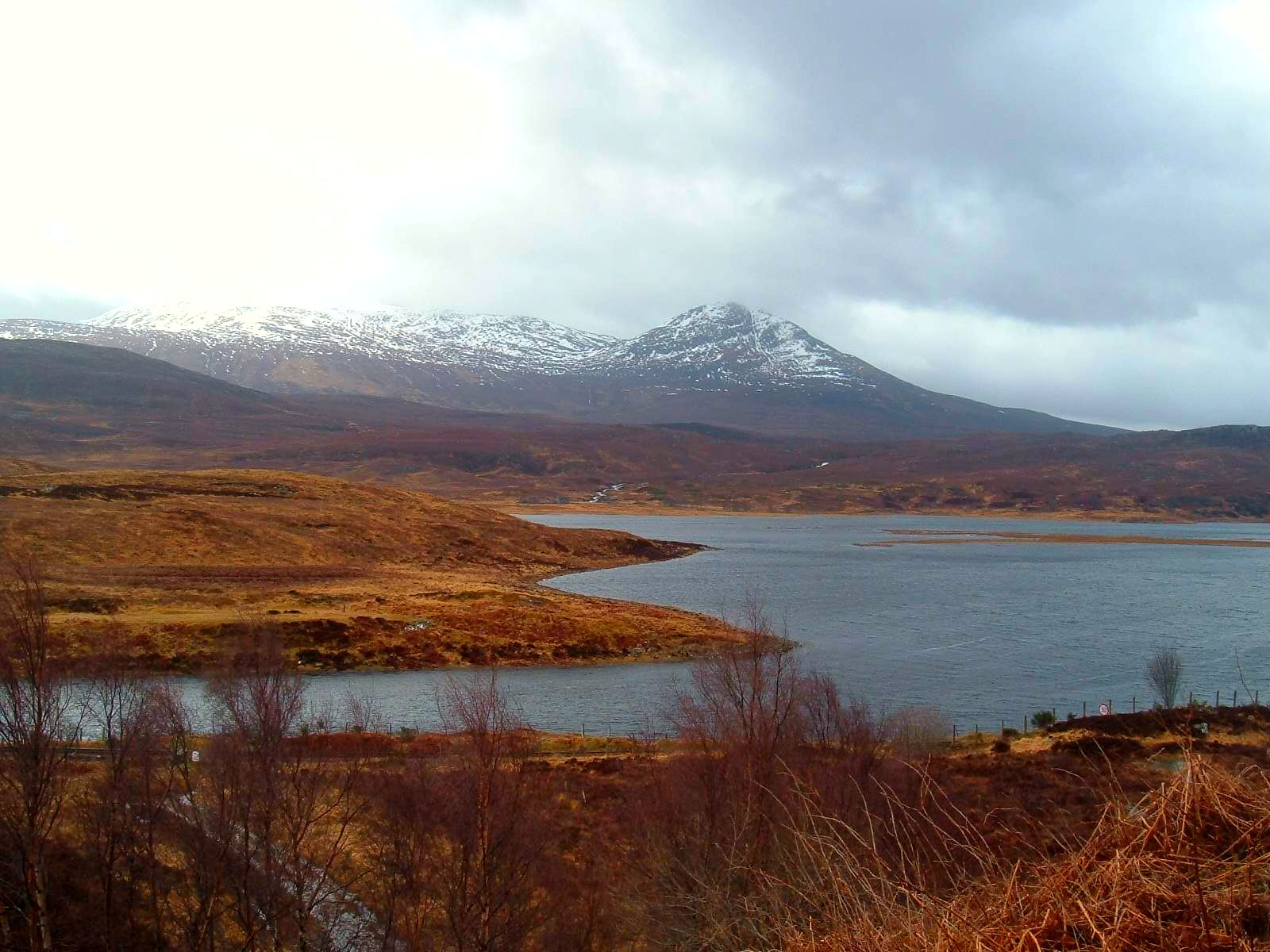An Cabar
Hill, Mountain in Ross-shire
Scotland
An Cabar

An Cabar is a prominent hill located in Ross-shire, Scotland. Rising to an elevation of 946 meters (3,104 feet), it forms part of the Fannich mountain range in the Scottish Highlands. An Cabar is situated about 20 kilometers southwest of the town of Dingwall and is easily accessible to outdoor enthusiasts.
The hill offers a challenging but rewarding climb for experienced hikers and mountaineers. Its steep slopes and rocky terrain provide a thrilling adventure, while the breathtaking views from the summit make it well worth the effort. On a clear day, one can enjoy panoramic vistas of the surrounding Fannichs, including the neighboring peaks of Sgurr Mor and Beinn Liath Mhor Fannaich.
An Cabar is rich in flora and fauna, with a variety of plant species and wildlife inhabiting its slopes. The lower slopes are covered in heather and grasses, while higher up, the landscape transforms into rugged rocks and scree. During the summer months, the hillside bursts into color with the bloom of vibrant wildflowers, creating a picturesque scene.
Due to its remote location, it is advisable for visitors to come prepared with appropriate hiking gear, including sturdy footwear and warm clothing, as weather conditions can change rapidly. It is also recommended to bring a map and compass or a GPS device to navigate the area.
Whether you're seeking a challenging hike or simply want to immerse yourself in the natural beauty of the Scottish Highlands, An Cabar offers a memorable outdoor experience.
If you have any feedback on the listing, please let us know in the comments section below.
An Cabar Images
Images are sourced within 2km of 57.63319/-4.920702 or Grid Reference NH2564. Thanks to Geograph Open Source API. All images are credited.



An Cabar is located at Grid Ref: NH2564 (Lat: 57.63319, Lng: -4.920702)
Unitary Authority: Highland
Police Authority: Highlands and Islands
What 3 Words
///deployed.bunkers.manicured. Near Achnasheen, Highland
Nearby Locations
Related Wikis
Achanalt
Achanalt (Gaelic: Achadh nan Allt) is a railway halt in Strath Bran, Ross and Cromarty, in the Scottish council area of Highland. It is served by a railway...
Achanalt railway station
Achanalt railway station is a geographically remote railway station on the Kyle of Lochalsh Line, serving the village of Achanalt in the north of Scotland...
Loch Fannich
Loch Fannich is a remote loch in Ross-shire, in Scotland. The loch is located 19 kilometres (12 mi) west of Strathpeffer. == Etymology == The name Fannich...
Grudie
Grudie (Grùididh in Scottish Gaelic) is a village, situated between Loch a' Chuilinn and Loch Luichart with the River Bran flowing past Grudie east to...
Nearby Amenities
Located within 500m of 57.63319,-4.920702Have you been to An Cabar?
Leave your review of An Cabar below (or comments, questions and feedback).

















